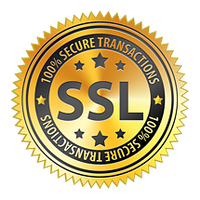This online snowboard lesson will go over Snowboarding With Two Feet In. This is the next step for beginner snowboarders that have been skating around and steering with one foot in. People tend to drag their back foot in the snow acting like an anchor to brake for them. At this level you need to be able to pressure the edge to turn the snowboard and not force the board around with hip rotation movements. Use more of your lower body like your ankles to flex the board and to steer. We also have some free snowboard videos for beginners to prepare you for a great day snowboarding on our YouTube Page. You’ll have access to all our snowboard tutorials when you signup that cover every step and feedback from your coach. I recommend watching these snowboard videos; Beginner Snowboard Lesson on Steering, Toeside Heelside Stance, Learn How To Ride The Lifts Safely, How to Snowboard: Balance Twist, Beginner Snowboard Stance, Snowboard Pads, Snowboard Training Hill, What To Wear Snowboarding, & How To Size Your Snowboard Learn to snowboard online with flowingfreeride.com, Take Placement Quiz, take a look at Our Blog for more free content, and learn to snowboard right!
Putting your back foot in is awkward at first but gets easier. Snowboarding is similar to riding a bike because the faster you go the easier it is to balance and steer. When you’re going slow on a bike you have to turn the wheel a lot instead of leaning when you’re going faster. If you’re slow enough you lose your balance and put your foot down. Snowboarding you need a little more speed to keep better balance and it’s easier to turn. I know at first beginner snowboarders may not want get more speed but with it turning takes less muscle effort. Your front foot will start your turn and then your back foot will follow. Remember it’s not all at once. I’ve given you drills to practice if you’ve signed up for FFR Snowboard Course. You can start getting the snowboard down the fall line and then across to get some speed and then slow down making J shape turns. Try to steer the snowboard going right foot forward or Goofy stance and then left foot forward or Regular stance. It will probably be easier to do this on your heelside edge but try to do it on your toeside edge also.
You will usually be on a Snowboard Training Hill area that is flat with a surface lift like a conveyor belt. If you’re out hiking away from the resort you’ll be wanting to learning on similar terrain. You do a lot of work with just one foot in before strapping in the second foot. When you feel comfortable controlling your snowboard hike up something a little steeper. You might need to leave your beginner area and find something a little steeper. Skiers can practice on the flat stuff and be fine to go right to the lift. Snowboarders should hike up a little bit and practice two feet in before going all the way up the lift. The area you’re at might be a small short lift and you can get away with that. Going to the lift is usually steeper terrain than what you’ve been practicing on. My advice is to hike up a bit and then put in two feet and see if you can still stop and steer. If you’re not then go back to the flat area and practice more with one foot in. A big tip is to let the board get flat and make small movements to steer the snowboard. Keep your core over your snowboard by staying balanced and not flailing your body all over the place.
Once you’re at this level you’re actually starting to snowboard a develop some muscle memory. The first few days can be hard on your body. I do recommend impact shorts and pads incase you have a hard fall. There are some Pros & Cons To Padding that I go over in this video. You can practice efficiently with Snowboardclass/FlowingFreeride’s techniques so go back to earlier snowboard videos that teach you about kids and beginner movements. You can signup to get access to all of our snowboard lessons, study guides, textbooks, glossary, tests and direct feedback from your coach. Learn to snowboard online with flowingfreeride.com and take a look at our YouTube Page for more free content and learn to snowboard right! My name is Blake Tholen Clark contact me if you want to book a lesson or have any questions about Snowboarding.


